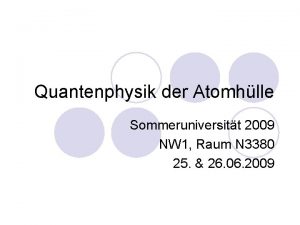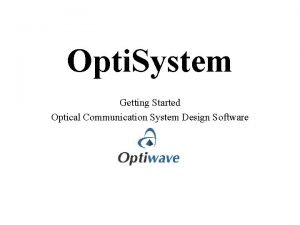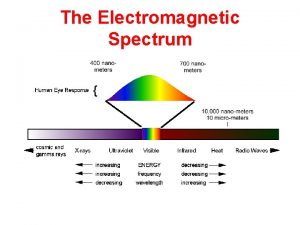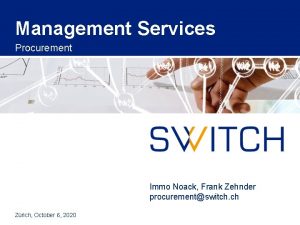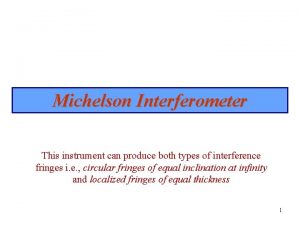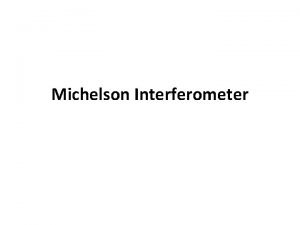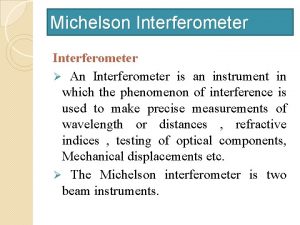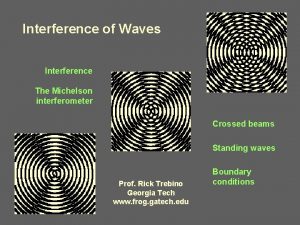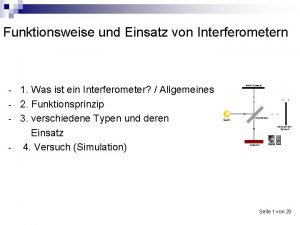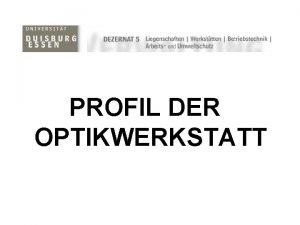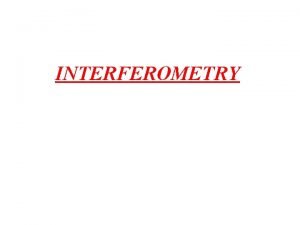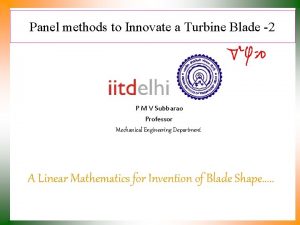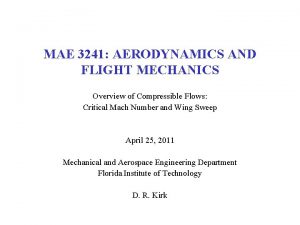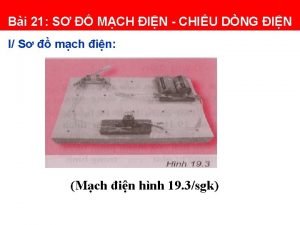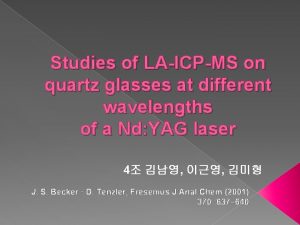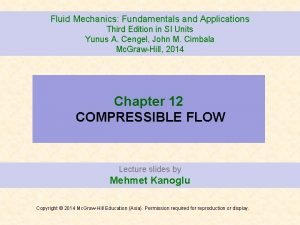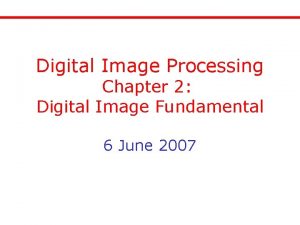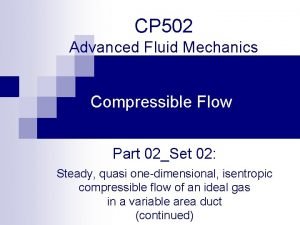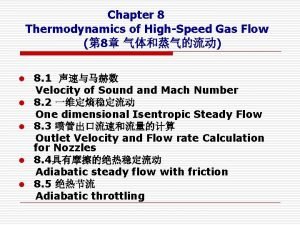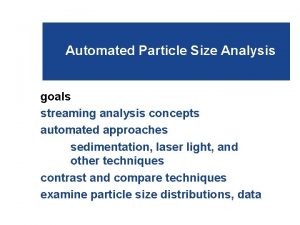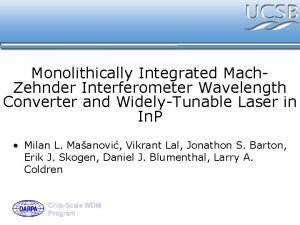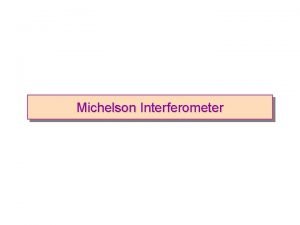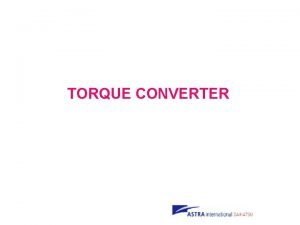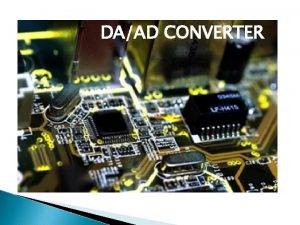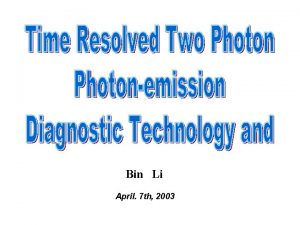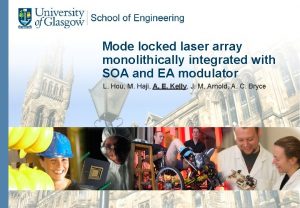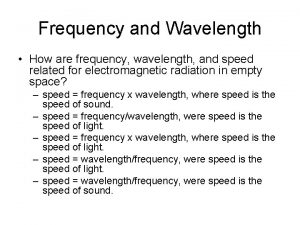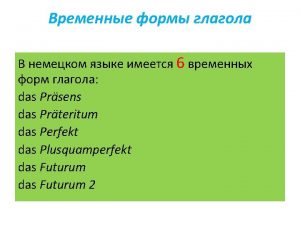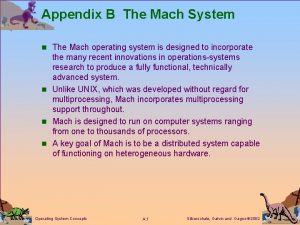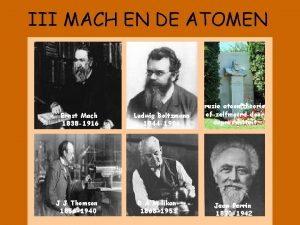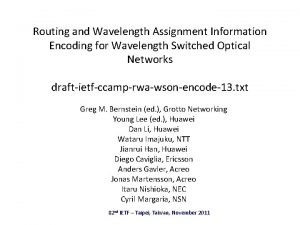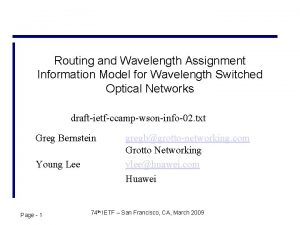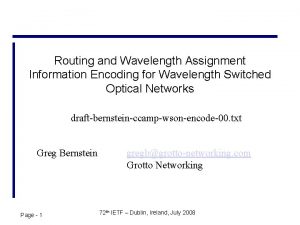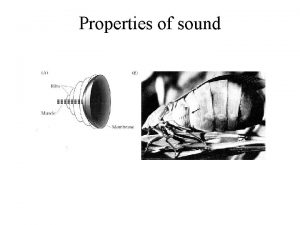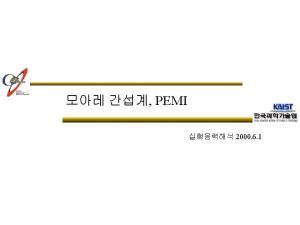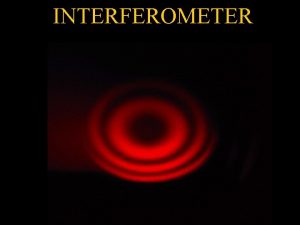Monolithically Integrated Mach Zehnder Interferometer Wavelength Converter and































- Slides: 31

Monolithically Integrated Mach. Zehnder Interferometer Wavelength Converter and Widely-Tunable Laser in In. P • Milan L. Mašanović, Vikrant Lal, Jonathon S. Barton, Erik J. Skogen, Daniel J. Blumenthal, Larry A. Coldren 04/25/03 Chip-Scale WDM Program

Summary of Work • Objective/scope – Demonstrate In. P monolithic integration of a widely tunable laser and all-optical wavelength converter for digital and analog wavelength conversion. • Approach – Utilize a common offset quantum well integration platform and a combination of passive, active and filter waveguides to implement on a single chip a Mach-Zehnder SOA Interferometer and widely tunable SGDBR laser. • Major accomplishments – Demonstration and testing of world’s first monolithically integrated tunable laser and AO wavelength converter – Wide conversion range: 50+nm in, 22 nm (L-Band) – 2. 5 GB/s error free operation • Issues – – 04/25/03 SGDBR on-chip output power and mirrors Passive waveguide losses, chip insertion losses SOA speed (gain recovery) Chip-Scale WDM C-Band operation Program 2

Monolithically Integrated In. P AOTWC Sampled Grating DBR Laser Mach-Zehnder Interferometer Input Amplifier Chip-Scale WDM Program 04/25/03 3

Integration Challenges • Enable a Common Fabrication Platform – Offset Quantum Wells – Tradeoffs Between Laser and MZI Performance • Optical Isolation – – Lasers Highly Sensitive to Coherent Reflections Active/Passive Interfaces Amplified Reflections Facet Reflections Need to be Suppressed Effectively (10 -5 or better) • Processing Issues – Material Quality - Uniformity – Processing Uniformity - Very Long Devices Chip-Scale WDM Program 04/25/03 4

SGDBR Laser Background • 4 Section Device • Wide Tunability, High Power • Suitable for Integration • Passive – Active Waveguide Combination • Does not Require Facet Reflection to Lase Front Mirror Gain Phase Rear Mirror Offset QW Device • Realized in Several Integration Platforms(*) • Offset Quantum Wells • Burried Ridge Stripe (OQW, QWI) *Beck Mason, Erik Skogen, Larry Coldren 04/25/03 Chip-Scale WDM Program 5

Interferometer - Cross Phase Modulation Transfer Function Cross-Phase Modulation Principle Optical Power π phase shift No CW light out CW in • • Semiconductor optical amplifiers used to achieve phase shift Incoming data disturbs phase balance data conversion Data in π phase shift Converted CW in SOA Current Signal Out • Inverting Operation • Non Inverting Operation Chip-Scale WDM Program 04/25/03 6

Generation I Interferometer Designs • Two different interferometer realizations – MMI/S Bend Design – 2 Stage MMI Design 1 - 1 x 2 MMI Splitter/Combiner 2 - S Bend 2 - 2 x 2 MMI Coupler 3 - MQW SOA 3 2 1 1 2 2 1 3 2 3 Chip-Scale WDM Program 04/25/03 1 7

MMI Components • Function – N*N power splitting/coupling – Most common components: • 1 x 2, 2 x 1 splitter/combiner • 2 x 2 (3 d. B) coupler • Properties – Simple Structure and Fabrication – Low Inherent Loss – Large Bandwidth – Low Polarization Dependence 1515 nm 1545 nm 1575 nm Chip-Scale WDM Program 04/25/03 8

Facet Reflections • Depending on the SOA Gain, Maximum Tolerable Reflection R=0. 25 10 -4 • Optimized Output Waveguide Required • Multilayer (3) AR Coating Width Taper 7° Angle 5 µm Chip-Scale WDM Program 04/25/03 9

Thermal Consideration – Interferometer Design è Thermal Crosstalk ðAffects power/gain/dynamics è 80 μm SOA Spacing ðTradeoff between device length and temperature effects Chip-Scale WDM Program 04/25/03 10

Epitaxial Heterostructure Chip-Scale WDM Program 04/25/03 11

Offset Quantum Well Process Active – Passive Removal Grating Formation In. P/In. Ga. As Regrowth • Most Mature SGDBR Fabrication Technology • Requires Single MOCVD Regrowth Metalization/Anneal Passivation/Implant Ridge Etch Chip-Scale WDM Program 04/25/03 12

Critical Steps - Verification • Active Regions Removal PL Line Scan • Gratings Etch AFM Scan Actual Device Layout (Active and Ridge Layer Shown) Active Regions Chip-Scale WDM Program 04/25/03 13

First Generation Tunable Wavelength Converter 5 um Chip-Scale WDM Program 04/25/03 14

Gain Bandwidth and Tuning Range Gain Peak – 1560 nm Tuning Range – 22 nm Chip-Scale WDM Program 04/25/03 15

Mirror Design • Mirror è Carrier Injection Cause for Index Change (7 nm) è Gen 1 Mirror ðPatchy Band Coverage ðIrregular Supermode Tuning ðGrating pitch – L-band lasers è Gen 2 Mirror ðProblem Fixed Chip-Scale WDM Program 04/25/03 16

Electrical/Optical Control Electrical Control Optical Control Chip-Scale WDM Program 04/25/03 17

DC Extinction Map • Higher Extinction For low bias currents Chip-Scale WDM Program 04/25/03 18

Power-Extinction Analysis • Difference in SOA Output Power Strongly Affects Extinction • Keep Powers Equal in Both Branches and Change Phase Independently Chip-Scale WDM Program 04/25/03 19

Phase-Extinction Relation • SOA Phase Change of Pi Required • High Speed Operation – Lower Index Change • Extend the SOA Length Chip-Scale WDM Program 04/25/03 20

Test Setup Back-to-back Data Gen. λin PC EDFA BPF PC Device BPF EOM λout BER BPF PD Error Rate Attenuator EDFA Pin Chip-Scale WDM Program 04/25/03 21

2. 5 GB/s Conversion – Fixed SGDBR Wavelength Input Eye Diagram PRBS 231 -1 1535 nm 1545 nm 1565 nm 1575 nm Converted Data 04/25/03 1555 nm Chip-Scale WDM Program 1585 nm 22

2. 5 GB/s Conversion – Fixed Input Wavelength Input Eye Diagram PRBS 231 -1 Converted Data 04/25/03 1557 nm 1566 nm 1570 nm 1578 nm Chip-Scale WDM Program 23

2. 5 GB/s Bit Error Rate Testing Fixed SGDBR Output Wavelength PRBS 231 -1 Input ~2 d. B Power Penalty 2 d. B Chip-Scale WDM Program 04/25/03 24

First Generation WC Performance Limits 5 GB/s Eye λin=1590 nm 2. 5 GB/s 1 m. W 04/25/03 +4 m. W SGDBR Power Difference Chip-Scale WDM Program 25

Summary of Issues to be Resolved • Mirror Design • Tuning Range • Low MZI Input Power (<0. 8 m. W) • Improve Electrical and Optical Extinction • Improve conversion efficiency (input to output) • Speed up Carrier Dynamics Chip-Scale WDM Program 04/25/03 26

Second Generation WC Design • Improvements è Redesigned Mirrors ðWider tuning range ðBetter ‘behavior’ è Output Coupler ðLight Evacuation è Phase Control ðImproved Extinction è Input SOAs ðBoost Input Power ðReduce Lifetime è 1. 4 Q Waveguide ðHigher Output Power Chip-Scale WDM Program 04/25/03 27

Second Generation WC with TIR Mirror • TIR Mirror è Insertion Loss ð~200μm propagation èDistortion ðNo SOA at the input è SNR ðEliminated extra ASE Chip-Scale WDM Program 04/25/03 28

Second Generation WC with TIR Mirror Chip-Scale WDM Program 04/25/03 29

Requirements for High Speed Wavelength Conversion • Requirements – – – Small Optical Area Large Confinement High Differential Gain Long Length High Bias Current • Buried Ridge Stripe using QWI – Improved Confinement – Reduced Losses/Reflections – Reduced Heating Chip-Scale WDM Program 04/25/03 30

Summary • Major accomplishments – Demonstration and testing of world’s first monolithically integrated tunable laser and AO wavelength converter – Wide conversion range: 50+nm in, 22 nm (L-Band) – 2. 5 GB/s error free operation • Future Work – Fabricate Second Generation Devices – Analog Characterization for Gen I Devices – Compare Performance (Digital/Analog) Chip-Scale WDM Program 04/25/03 31
 Dreidimensionaler potentialtopf
Dreidimensionaler potentialtopf Opti
Opti Buck converter and boost converter
Buck converter and boost converter Longest to shortest wavelength
Longest to shortest wavelength Zehnder rittling
Zehnder rittling Frank zehnder
Frank zehnder Wavelength integrated power services
Wavelength integrated power services Types of fringes in michelson interferometer
Types of fringes in michelson interferometer Prinsip kerja interferometer adalah
Prinsip kerja interferometer adalah What is the principle of michelson interferometer
What is the principle of michelson interferometer Michelson interferometer formula
Michelson interferometer formula Site:slidetodoc.com
Site:slidetodoc.com Interferometer oberflächenmessung
Interferometer oberflächenmessung Laser interferometer space antenna
Laser interferometer space antenna Npl gauge interferometer
Npl gauge interferometer Magdalena ridge observatory
Magdalena ridge observatory Mach's principle
Mach's principle Prandtl glauert rule
Prandtl glauert rule Pitot tube formula
Pitot tube formula Mach number formula
Mach number formula Cessna airfoil
Cessna airfoil Sơ đồ mạch điện chiều dòng điện
Sơ đồ mạch điện chiều dòng điện Mach in distributed system
Mach in distributed system Mach disk
Mach disk Mach band effect in computer graphics
Mach band effect in computer graphics Irene mach
Irene mach Mach number in fluid mechanics
Mach number in fluid mechanics Color levels
Color levels Mach number in fluid mechanics
Mach number in fluid mechanics Cộng logic
Cộng logic Isentropic mach number
Isentropic mach number Aluminum association
Aluminum association
